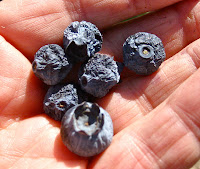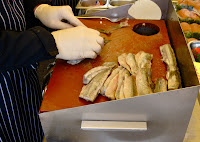For most people, summer means vacation time and, more than likely at least one road trip. We started early this year and took a trip up the coast for a long weekend.
Driving from Los Angeles to Northern California, we usually take the 5. A boring drive, the 5 is all about getting up the coast as quickly as possible.
This trip we decided to take the 101. A bit slower, but a lot more scenic with the opportunity to interact with the communities along the way.
When I was growing up, my mom’s favorite thing to do when we hit the road was to stop at the roadside stands and buy fruit and vegetables from the local farmers. What she dearly loved was when we could actually stop at the farm and do the picking ourselves.
One of her favorite places to visit was Cherry Valley, east of Los Angeles, where she would find an orchard that would let us kids climb up the ladders, buckets in hand, and pick and eat as many cherries as we could handle.
One of her favorite places to visit was Cherry Valley, east of Los Angeles, where she would find an orchard that would let us kids climb up the ladders, buckets in hand, and pick and eat as many cherries as we could handle.
Heading up north I remembered those experiences when I saw the signs for Restoration Oaks Ranch's Santa Barbara Blueberry Farm, with its U-Pick option.
Thirty minutes north of Santa Barbara and three miles south of Buellton (home of Anderson's Pea Soup), from May to early August, keep a lookout on the east side of the highway. There are signs on both sides of the highway but the turn off comes quickly, so be alert, especially on the southbound side where the exit is from the left lane.
Protected from birds by a high wall of netting, the farm grows several varieties of blueberries: Bluecrisp, Emerald, Jewel, Star, Misty, and Sharpblue. The plants grow in long rows, stretching from the highway back into the hills.
Blueberries grow on low bushes, the fruit gathering in tight clusters on the branch ends.
Walking up and down the rows we passed couples feeding each other berries as if they were on a romantic date. Then there were the families with kids, who rushed from plant to plant, picking and eating berries, yelling out, "I found the best ones."
For our part, my wife and I approached the task with deliberation. Mostly that meant picking berry by berry, but when we found a perfectly formed cluster, a quick sweep of the branch yielded a handful of berries that clattered satisfyingly into the bucket.
Harvesting blueberries is sweet work. You pick a few and eat a lot as you walk down the rows. We enjoyed them all the more knowing blueberries are healthy and nutritious.
The best berries are plump, firm, and colored a dark shade of blue. Ripe berries are on the top of the plant but also down below, so it's worth the effort to crouch down and check the lower branches.
In addition to all those nice plump, ripe berries, you'll also see ones that are slightly wrinkled. We had a difference of opinion about those.
My wife didn't care for them, but I did because they have a thick, jammy taste, reminding me of homemade blueberry pie. Because my wife didn't want any wrinkled berries in our bucket, I ate them as I picked.
My wife wandered off in one direction. I, in another. We walked up and down the rows, enjoying the warmth of the afternoon sun and the easy quiet of the rolling hills surrounding the farm.
Walking down the rows, I couldn't get over that there were so many berries! How could I pass by ripe, perfectly formed blueberries, sweet and luscious and not pick every one in sight?
With a quick grab, I could fill my mouth with great tasting blueberries. So delicious, so available.
With blueberry stained fingers, I placed yet another handful of berries in my mouth when my wife called out to me. Actually she called several times before I heard her. "David," she said, "Come on, you've had enough."
I nodded in agreement but managed to run my hand along another branch and enjoyed a last mouthful of berries before I re-joined her. With our buckets filled, we walked hand-in-hand down the dirt road, stopping at the outdoor sink to wash the blueberry stains off our hands, and then to the shack where we paid for our blueberries.
In 30 minutes my wife and I had filled our buckets. At $15.00 a bucket (about 2 quarts), the blueberries are a bargain, considering that at farmers' markets small containers cost $3.00-4.00.
At our friends' house that night, we proudly served the berries as the crowning topping to a pineapple-strawberry fruit salad. The combination was perfection. Each fruit had a different tartness and sweetness. Their flavors melded beautifully.
With a large bowl in the refrigerator, everyone in the house made frequent stops to grab a handful. In no time at all, we had eaten all the blueberries.
With a short growing season and given that it was unlikely we would drive up 101 anytime soon, when we headed back to LA, we left early so we could stop at the blueberry ranch and pick another bucket.
Back home I remembered all those ears of corn, peaches, and cherries, I used to pick with my mom and sister and I was very happy to have a bucket of blueberries in the refrigerator. What a great way to start the week with a breakfast of fresh blueberries, yogurt, and cereal.






























